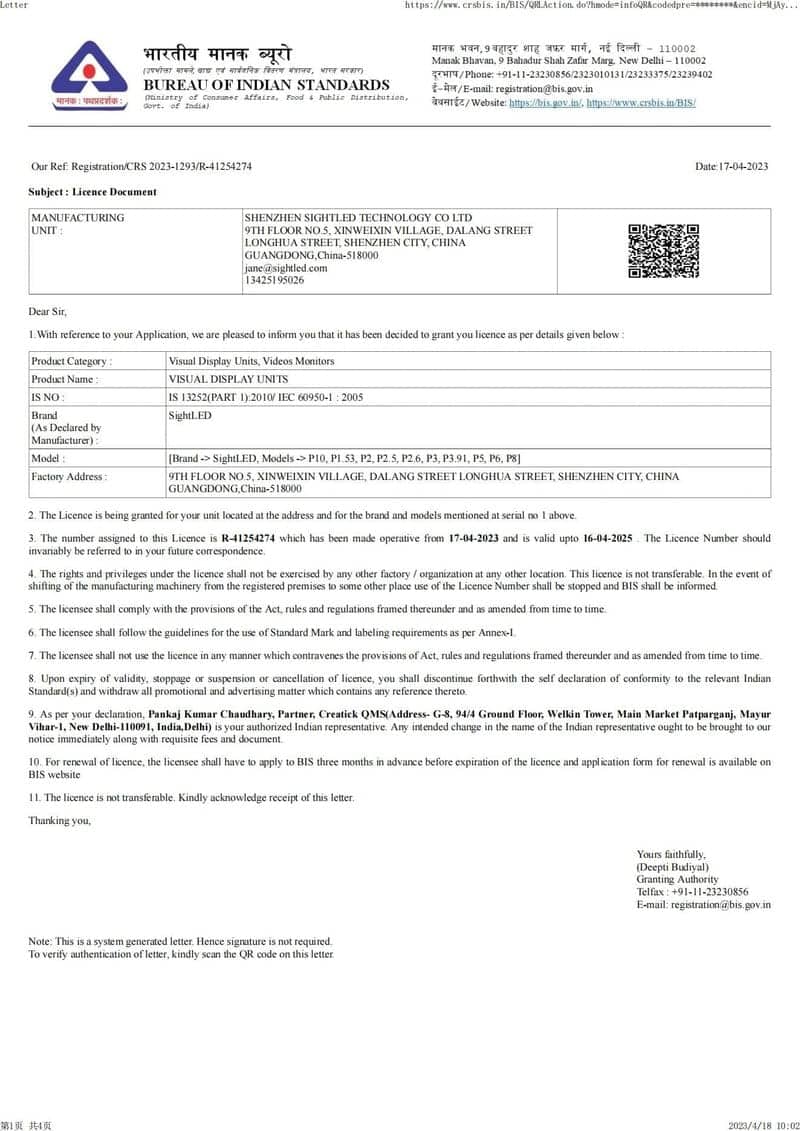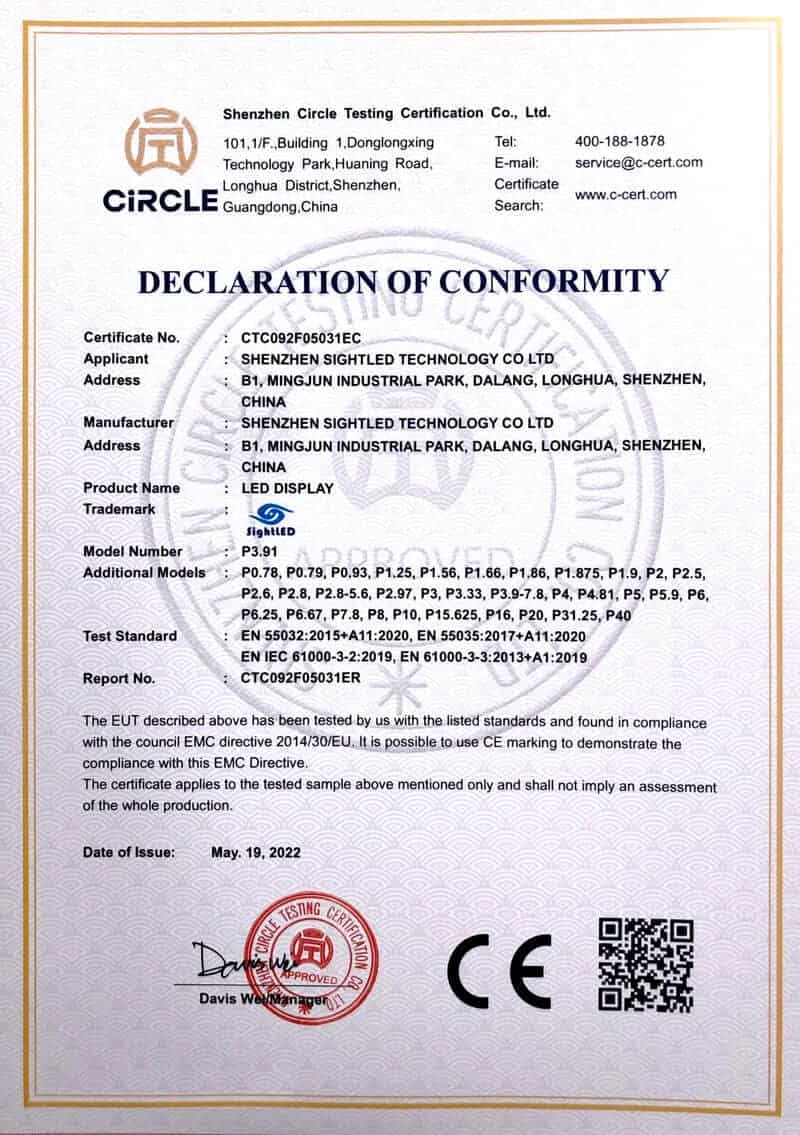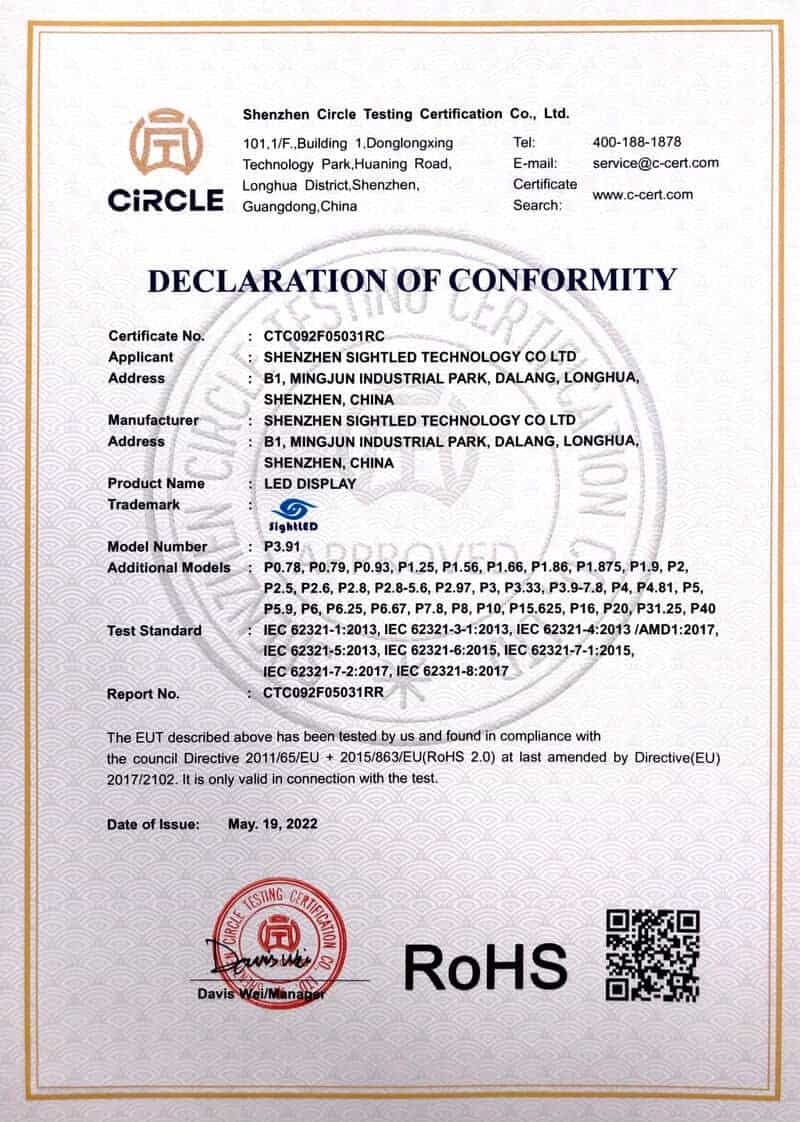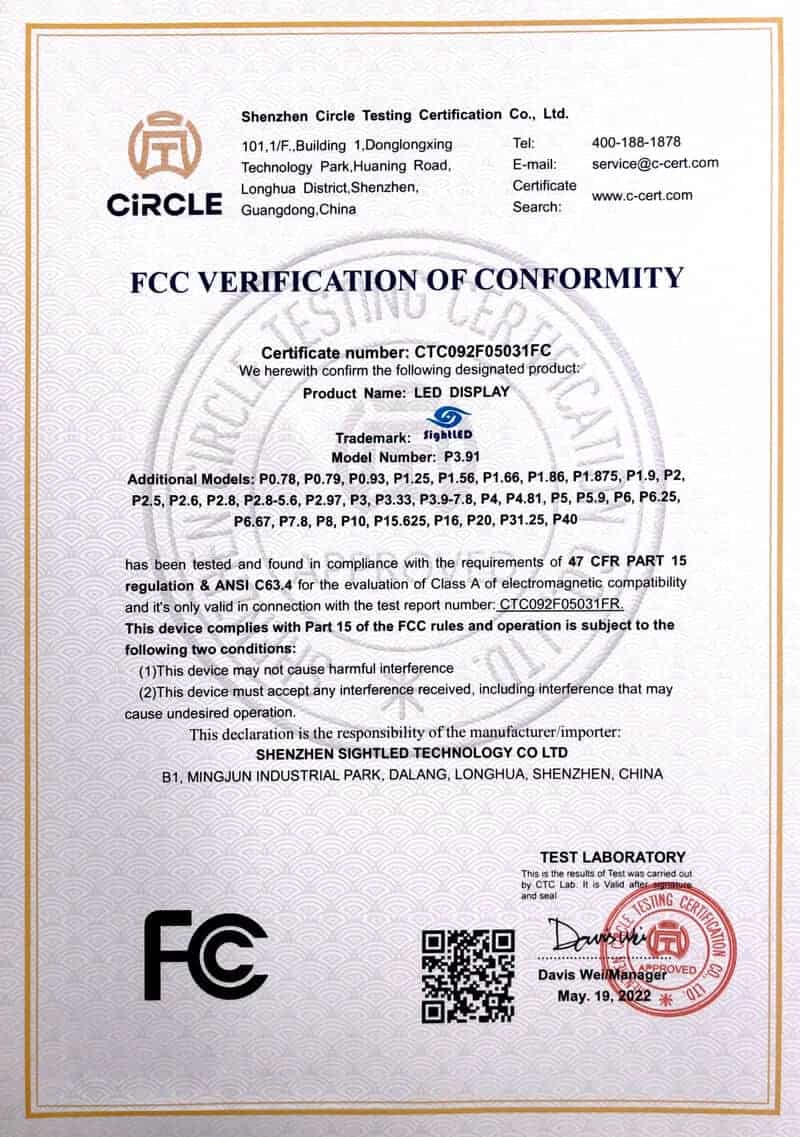SightLED Flexible LED modules
SightLED flexible LED display modules offer a wide range of applications with a pixel pitch ranging from P1.25 to P4. These modules provide exceptional flexibility, high-resolution visuals, and seamless installation on curved or irregular surfaces. With vibrant color reproduction, wide viewing angles, and easy maintenance, our flexible LED display is a versatile and reliable solution for creating immersive and captivating visual displays in various settings.
- Optimal bending angles >135 degree.
- Special soft and stable circuit layout PCB design
- Strong and big magnetic force.
- No warping and no degumming on corners.
- Different module size for options - 240*120mm, 320*160mm.
.jpg)
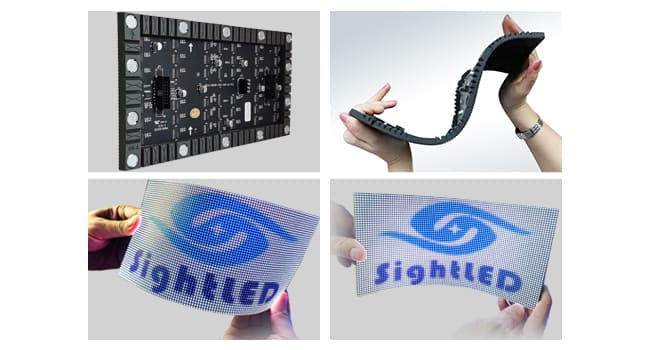
Full Color Creative Flexible LED Screen
Pixel pitch: Indoor P1.25/ P1.5/ P1.6/ P1.8/ P2/P2.5/P3/P4
- SightLED flexible LED display modules offer a wide range of applications with a pixel pitch ranging from P1.875 to P5. These modules provide exceptional flexibility, high-resolution visuals, and seamless installation on curved or irregular surfaces. With vibrant color reproduction, wide viewing angles, and easy maintenance, our flexible LED display is a versatile and reliable solution for creating immersive and captivating visual displays in various settings.
Why Choose SightLED Flexible LED modules
At SightLED, we are committed to providing top-quality rental LED screens and ensuring that our clients receive exceptional customer service and support. Whether you are planning a corporate event, concert, or sports tournament, our team of experts is here to help you make it a success.
SightLED , a trusted name in the LED display industry with over 12 years of experience.
SightLED has installed LED screens in over 100 countries around the world, providing a global reach for events of any size.
- High-quality: Our outdoor LED displays use high-quality materials and advanced technology, ensuring stability and durability.
- Strong production capacity: With a 15000 square meter factory and advanced equipment, we can meet the needs of customers with various orders.
- Professional certification: Our products are certified by ISO9001, CE, RoHS, FCC, CCC, BIS, EMC, and other international organizations, ensuring their quality and safety.
- Excellent after-sales service: We provide timely and professional after-sales service to ensure customer satisfaction.
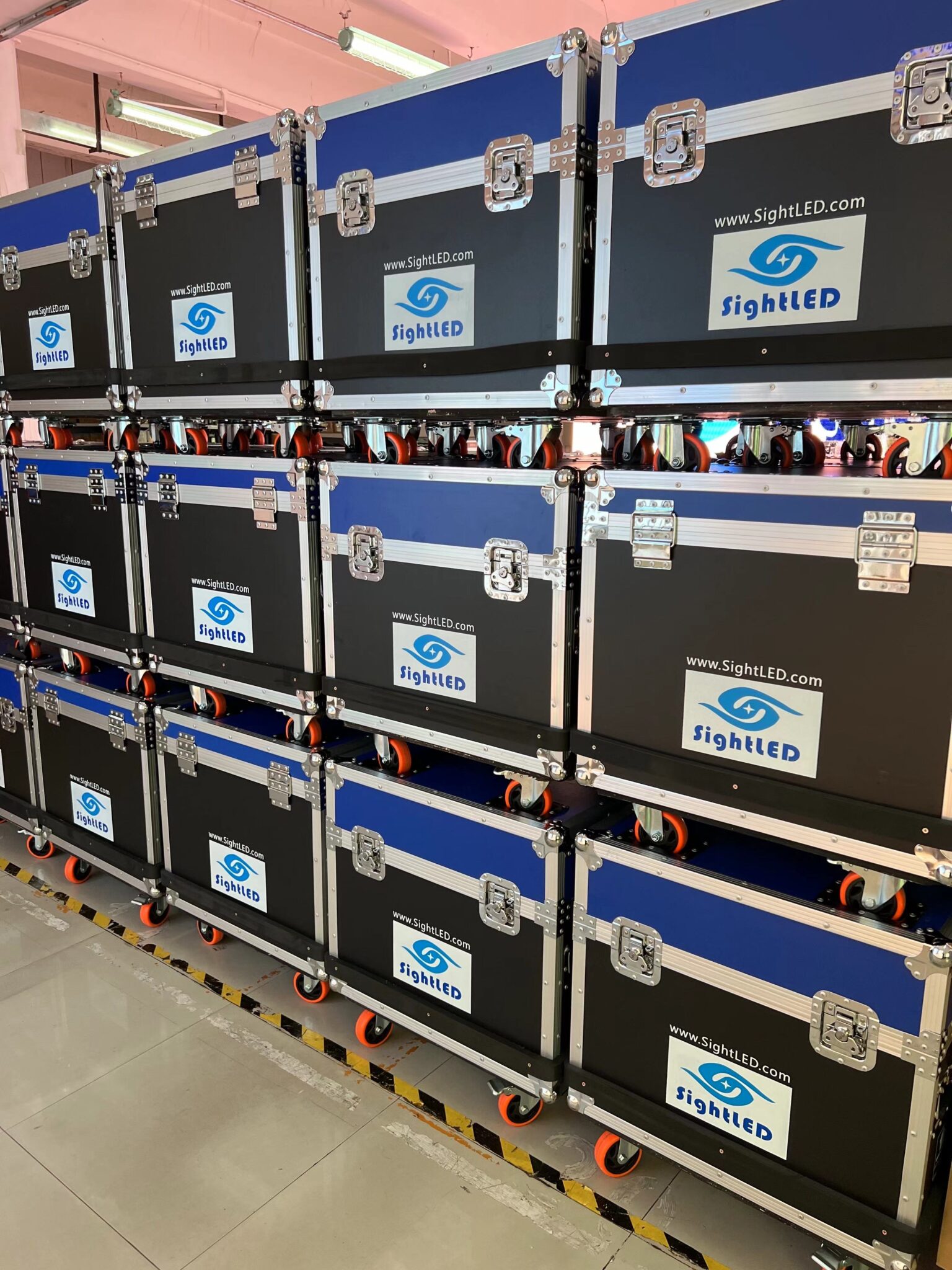
How We Build Our High-Quality LED Displays
Ultimate FAQ Guide
What Is Flexible LED Module?
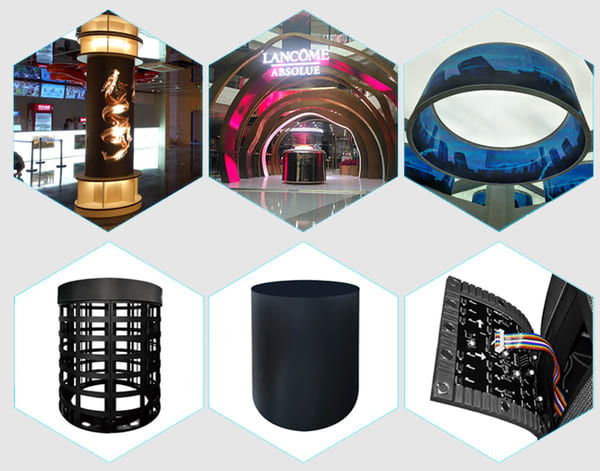
Main advantages of flexible LED modules
Flexible LED Display Module Applications
Differences between traditional LED displays and soft LED modules
- Structure and Flexibility: Traditional LED displays consist of rigid panels that are assembled together to form a display screen. They are inflexible and cannot be bent or curved. On the other hand, soft LED modules are made of flexible materials that allow them to be bent and curved to fit various shapes and surfaces. This flexibility enables creative and customized display installations.
- Portability and Installation: Traditional LED displays are relatively bulky and require a complex installation process. They often come in fixed sizes and are challenging to transport and set up. In contrast, soft LED modules are lightweight, thin, and easy to transport. They can be rolled or folded for convenient storage and transportation, and their flexible nature makes installation on curved or irregular surfaces simpler and faster.
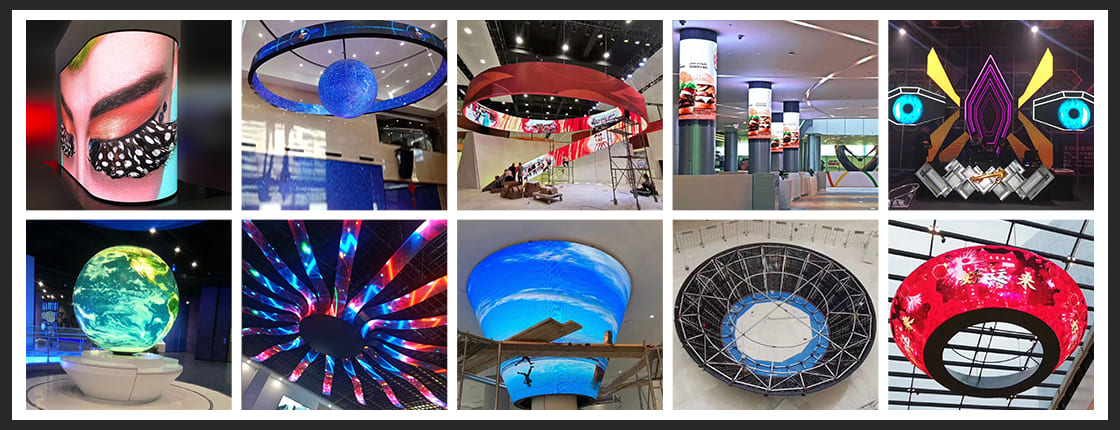
- Durability and Resistance: Traditional LED displays are generally robust and can withstand harsh outdoor conditions, such as rain, dust, and extreme temperatures. Soft LED modules are also designed to be durable and resistant to these environmental factors, making them suitable for both indoor and outdoor applications. Additionally, the flexibility of soft LED modules allows them to absorb impact and reduce the risk of damage.
- Design Flexibility: Traditional LED displays often come in fixed shapes and sizes, limiting the design possibilities. Soft LED modules, with their flexibility and modular nature, offer greater design flexibility. They can be easily manipulated and arranged to create unique shapes, curved displays, and irregular layouts, allowing for more creative and customized visual solutions.

